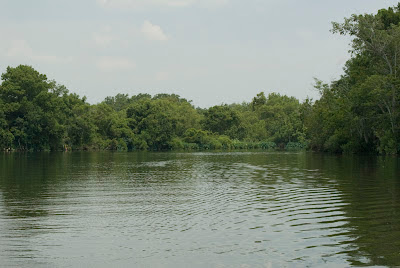A few quick notes and photos.
Yesterday I took a non-Atlas trip to the Gueydan area to study swallows. I was hoping to look at young Cliff and Cave swallows to see how much room for confusion there is with the pair, and to look for clues for how to sort them out if they can and do look alike.
But funny things happen when you're trying to put the blinders on.
Among the swallows was a Bank Swallow that hadn't been recorded yet for the Gueydan Quad.
That meant I should spend an hour counting birds in the Gueydan Quad. I was driving away from the swallow spot when I noticed a wet field along the highway. In it were shorebirds, which the Gueydan Quad also needs. And among the shorebirds there were two godwits, a Marbled and a Hudsonian.
These are probably the same godwits Steve Cardiff and Donna Dittmann found a few miles to the west last week. Wet fields dry up quickly in summer, and when they do, birds move on.
Gueydan Quad: 10+ hours.
This morning I headed to the Fenton Quad to put the final hours in on it. It was tremendously birdy. A Common Ground Dove flew up off a roadside and started singing.
Storks and other waders filled up flooded fields.
And there were swallows everywhere. Caves and Cliffs, Barns, and young of all three.
 |
| Juvenile Cave Swallow |
 |
| Adult Cave Swallow |
 |
| Juvenile Cliff Swallow |
Next I found myself in lovely Iowa, Louisiana.
And, lo and behold! It was time to eat. Of course, when boudin is on the menu, it's always time to eat.
I parked between the lines, and porked out.
Pretty decent boudin. I'd had Rabideaux's before, but this was better than I remembered. Good flavor, good texture, nothing bad about it. I added salt, of course.
The Iowa Quad wasn't quite as good. The most interesting part for me was hearing Gray Catbirds singing. I don't get to hear catbirds very often. I had four catbirds, and every one of them had incorporated the caw of a crow into its song. Do they often do that, or are the Iowa catbirds really talented? Whatever the case, it was a perfect imitation.
I also got to hear a Bobwhite giving wacked out calls from a perch in a short monglier shrub.
Iowa is a good area for Scissor-tailed Flycatchers, too.
And this Common Nighthawk was kind enough to fly around and land where I could get a photo.
















































